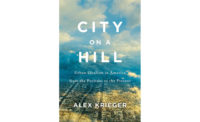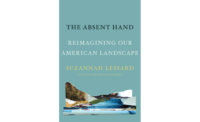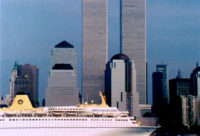Review of 'Ballpark: Baseball in the American City'
by Paul Goldberger

Ballpark: Baseball in the American City, by Paul Goldberger. Knopf, 384 pages, $35.
In baseball’s quaint antiquity, teams made money by selling tickets to watch the game, rather than through broadcast rights and branded merchandise. Hence stadiums were situated in population centers, which created the undesirable side effect of allowing people living nearby to watch the games from their windows, free, or even sell tickets themselves. The teams built higher fences; the freeloaders responded by erecting stands on their roofs, finally driving one team, the Chicago Cubs, to buy most of the houses behind Wrigley Field and put their own bleachers atop them, which I might not have believed if I didn’t see it myself on the jacket of the architecture critic Paul Goldberger’s new book.
The much-beloved Wrigley, which dates from 1914, looms large in Goldberger’s account. Its quaint, ivy-covered outfield fence and its near–North Side location make it the perfect illustration of one of the author’s key themes, the baseball “park” (or “field” or “grounds”) as rus in urbe, a small piece of countryside transplanted to downtown. Like nature itself—but unlike, say, football—baseball has no fixed boundaries. Beyond the right angles of the infield, it occupies a theoretically limitless space whose main constraint, in the pre-suburban-stadium era, was the surrounding real estate. This called forth some creative architectural solutions to achieve maximum seating capacity, optimal sight lines, and enough distance to the outfield fence to create a meaningful distinction between a pop fly and a home run.
Mostly, these efforts fell short, in part because the laws of physics do not easily allow for a second tier of grandstands without supporting columns that interfere with the view from the lower deck. Goldberger is good on the ingenuity that was applied to fit Wrigley (and Boston’s Fenway Park, Brooklyn’s Ebbets Field, and Detroit’s Tiger Stadium) into their eccentric lots. He is meticulous about details such as the commodious ramps in the original Yankee Stadium that allowed more than 60,000 attendees at its first opening day to exit the stands in just 11 minutes. He dwells, perhaps a touch more than necessary, on the facades, materials, colors, and decorative touches of what are, for the most part, utilitarian structures that are occupied, for a few hours at a time, 80 or so days a year. Some readers— fans of baseball as well as architecture—might like a little more on how the eccentricities of various parks affected the players and the game, beyond the obligatory reference to Willie Mays’s immortal back-to-the-plate catch in the 1954 World Series of a ball that would have been a home run in almost any park other than Manhattan’s old Polo Grounds. He devotes several pages to the history of the “Green Monster”—the wall enclosing Fenway’s short left field—with no discussion of how it shaped the career of Carl Yastrzemski.
Even Mickey Mantle appears only once in the book, giving his impression of the Houston Astrodome: “It reminds me of what my first ride would be like in a flying saucer.” Goldberger views the Astroturfed indoor ballpark with a jaundiced eye, albeit preferable to Seattle’s Kingdome, “a structure so banal that it made the Astrodome seem vibrant and fresh.” This was the apotheosis of the second wave of baseball parks, the symmetrical concrete ovals plunked down amid an endless plain of parking lots. The third wave, of retro-designed stadiums on downtown sites, was ushered in by Baltimore’s acclaimed Camden Yards stadium, which inspired numerous imitators but also gave rise to what Goldberger considers a less appealing fourth wave, the stadium as the anchor of a larger real-estate venture, a themed faux-urban entertainment/retail district, “a way of withdrawing from the city into an upscale bubble.” Authenticity, he writes, “should mean connection not only to the past, but also the present, not only the rus but also the urbe.”





